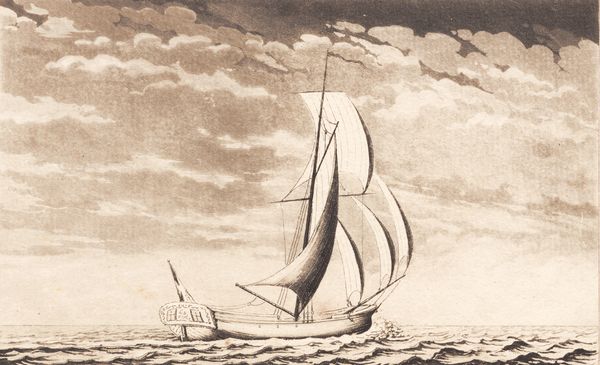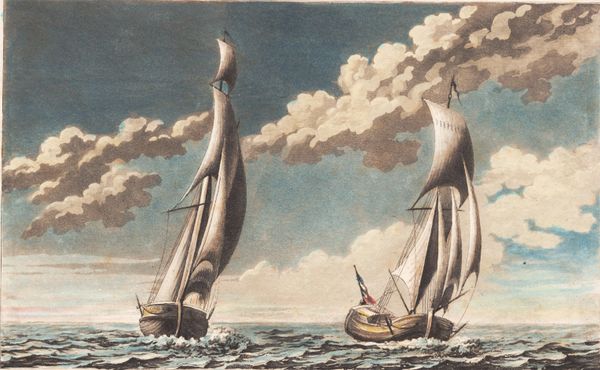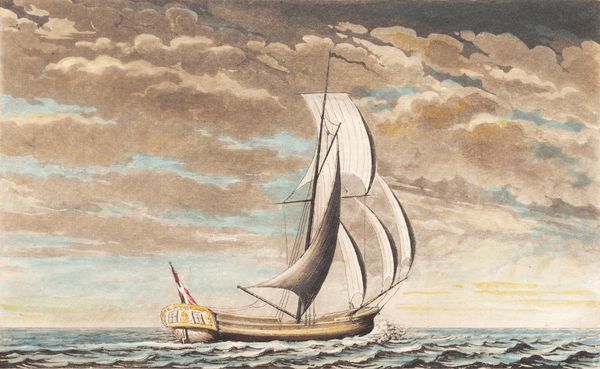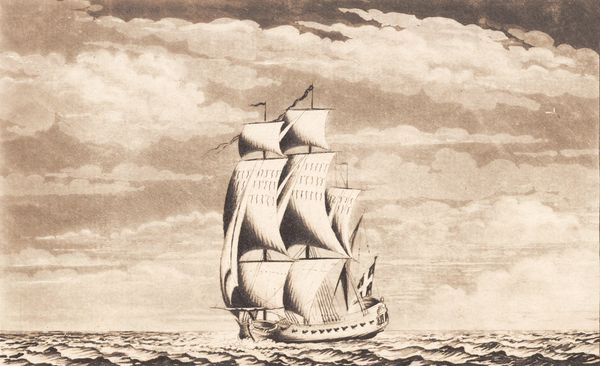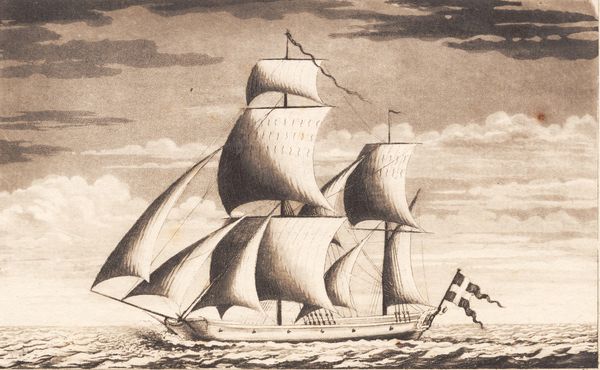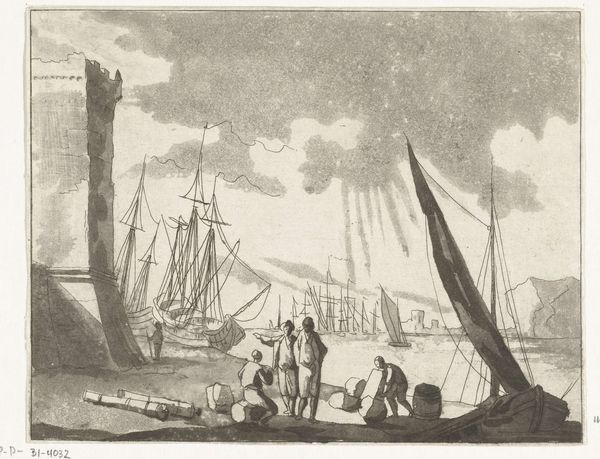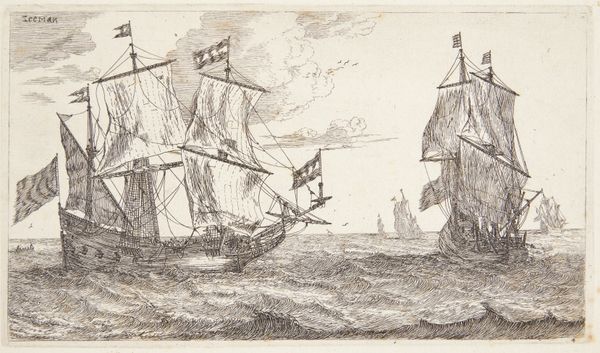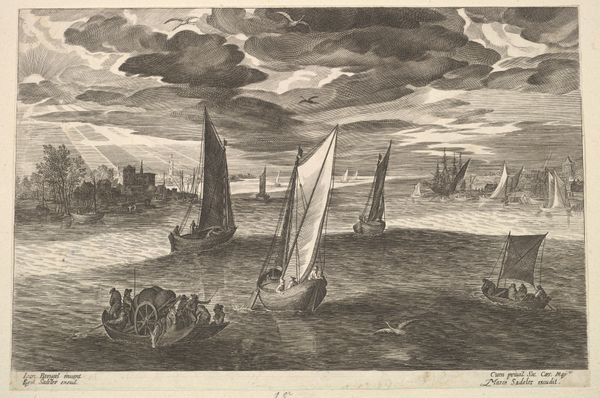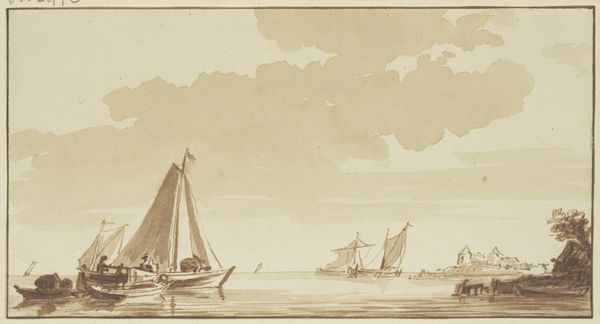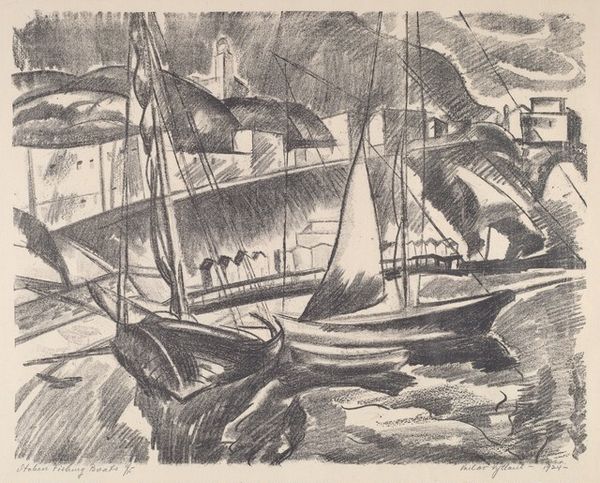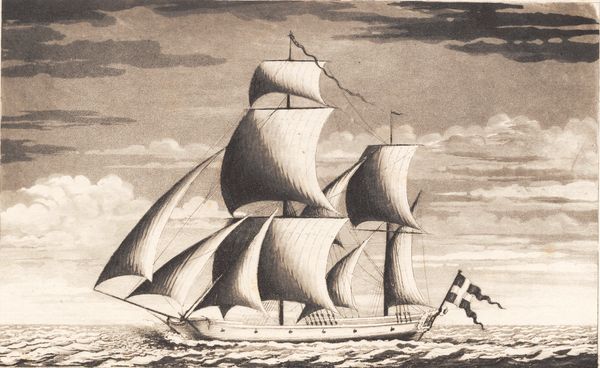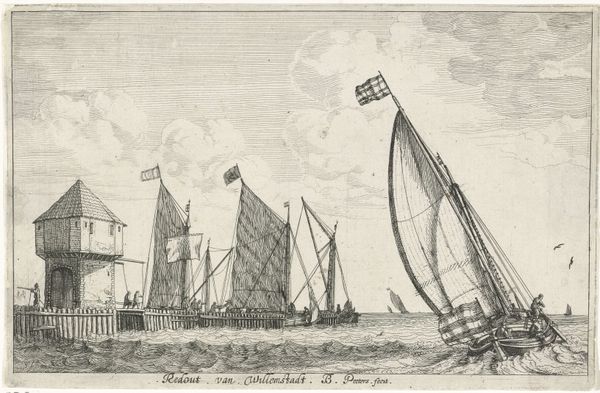
aquatint, print, etching
#
aquatint
# print
#
etching
#
landscape
#
genre-painting
Dimensions: 136 mm (height) x 194 mm (width) (bladmaal), 115 mm (height) x 169 mm (width) (plademaal), 96 mm (height) x 155 mm (width) (billedmaal)
Curator: Let's turn our attention to "Suite af skibe. 2de Jagter," a print rendered with etching and aquatint, attributed to J.F. Clemens, placing its creation sometime between 1748 and 1831. Editor: My initial reaction is a feeling of dynamic serenity. The sepia tones and the choppy water evoke a specific historical atmosphere, but I feel a strange quietude amid all that implied movement. Curator: Indeed. The aquatint lends a soft, atmospheric quality that tempers the graphic precision of the etched lines. Considering the socio-economic context of the period, prints such as this offered a glimpse into maritime life for a wider public, celebrating seafaring and potentially, commerce and colonial ambitions. Editor: And let's not forget the gendered element, Curator. Historically, the sea is almost always coded as masculine. Note that there are two ships pictured. The one to the left dominates the foreground and evokes the sublime in ways that reinforce a social power dynamic—in other words, who gets to benefit most from resources? It’s as if to ask who commands the metaphorical and literal ship, given that it might be men sailing and benefitting from commerce in particular social structures. Curator: Precisely, an industry where women’s roles are largely obscured. Clemens might not be explicitly endorsing this power structure, but is rather depicting its visual and symbolic manifestation for public consumption. This could subtly reinforce the era’s perception of man's dominion over the seas and their related power systems. The genre-painting also seems to suggest this social norm. Editor: What's particularly striking to me is how the medium of aquatint can smooth over these stark differences, creating a sense of historical distance and therefore obscuring what are some very brutal historical forces. Curator: The very qualities that rendered the image widely appealing perhaps serve to gently naturalize inequalities, and even atrocities, inherent in maritime expansion and its consequences. By turning them into picturesque prints displayed in parlors across the land, or the continent, it allows audiences to selectively ignore certain historical realities. Editor: Ultimately, engaging with such pieces demands we critically assess not only their artistic qualities but also how these were once, and continue to be, culturally used and interpreted. Curator: A sobering point to remember as we contemplate such historical pieces. They often come bearing gifts and, too often, great historical burdens.
Comments
No comments
Be the first to comment and join the conversation on the ultimate creative platform.
